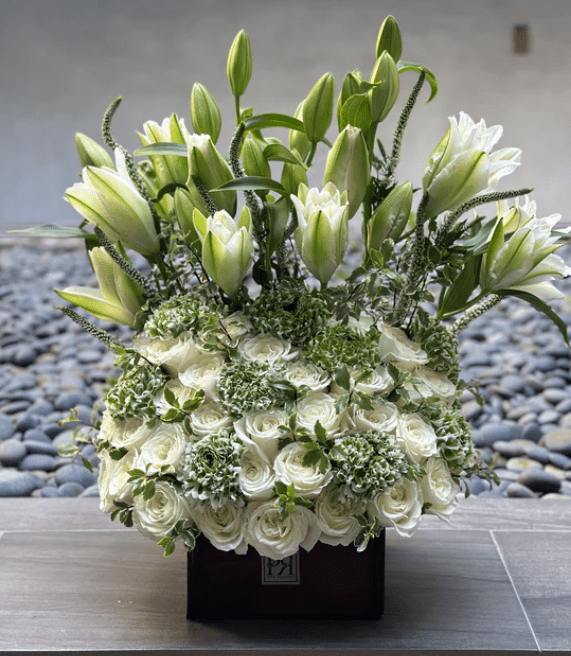
Traditional Christmas Flowers
1. Amaryllis

Amaryllis is a popular Christmas bloom. It blooms with festive bright red flowers that are the perfect match for traditional Christmas colours. Other varieties produce snowy white flowers, ideal for that winter wonderland look. The flowers are very large and trumpet shaped, making them naturally eye catching.
Despite their wintry reputation, they are actually tropical plants native to South and Central America. Nevertheless, they became popular gifts at Christmas as they can bloom indoors in the winter. Although it’s commonly bought as a plant, it works just as well in, adding showy flair to arrangements. It looks especially fabulous when paired with other festive foliage like berries.
Amaryllis also has the benefit of being very . The plants bloom for around 7 weeks at a time, meaning they’ll look stunning throughout the festive period and beyond. Similarly, cut Amaryllis have an impressive vase life, and with proper care will last three weeks or more. Buy a bouquet a couple of weeks before Christmas and you can enjoy it until after the New Year.
In the Amaryllis symbolises strength, confidence, success and determination. The perfect way to send your best wishes for a New Year full of prosperity.
Note: Interestingly, the plants commonly called ‘Amaryllis’ are actually part of the Hippeastrum genus. The only true Amaryllis is native to South Africa, and is the only plant in that genus. This was eventually decided after many centuries of debate and confusion amongst botanists.
2. Poinsettia

There’s no Christmas plant more iconic than the Poinsettia. It’s the most popular houseplant in the UK at Christmas, and with its gorgeous mixture of red and green festive foliage, it’s easy to see why. Around 8 million are sold every single year. Red varieties are by far the most popular, but other colours, including white and pink, are also grown.
Poinsettias are a little different to other flowering plants. The popular red ‘petals’ are actually bracts, the upper leaves of the plant. The flowers themselves are tiny, but can be seen nestled in the middle of the leaves, and are usually green or yellow in colour.
Poinsettias are native to Central America, where they flower in the winter. In Mexico, they are part of a Christmas legend. It’s said that a poor girl was looking for a present to give to the baby Jesus at a Christmas service, but there was little she could afford, and so she resorted to bringing a small bouquet of weeds from the road. When she placed the humble bouquet at the Nativity scene, it transformed into the beautiful red Poinsettia.
Poinsettia Care Tips

To help keep your Poinsettia looking healthy and fresh over the festive period, you can follow a few simple care tips. Keep the plant in bright sunlight for around six hours a day, whilst keeping it away from direct sunlight, drafts, and heat. The soil should be kept moist, but you should avoid overwatering and having it sit in excess water. Wait until the top layer of soil is dry to the touch before adding more water.
When cared for properly, the flowers and bracts on Poinsettias can last for a few months. Once the plant has finished blooming in the spring, you should trim back the stem and prune old leaves and flowers.
It can be tricky to get them to rebloom the following Christmas, but you can help Poinsettias along by watering them and occasionally adding fertiliser to the soil throughout the year. To encourage them to bloom again, it’s recommended to leave them in complete darkness for 14 hours a night starting in October. This can be done simply by covering the plant with a box, or placing it in a cupboard. This kickstarts the flowering process and colour change from green to fiery red.







